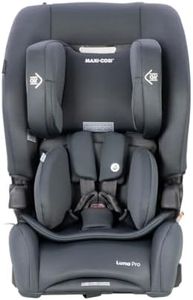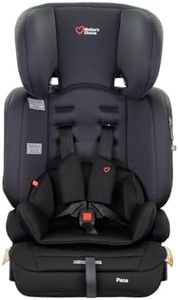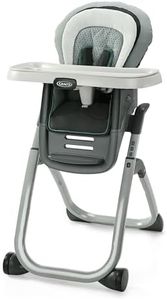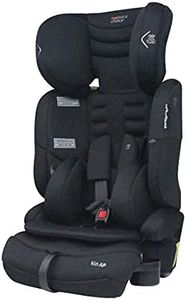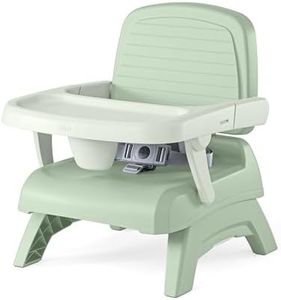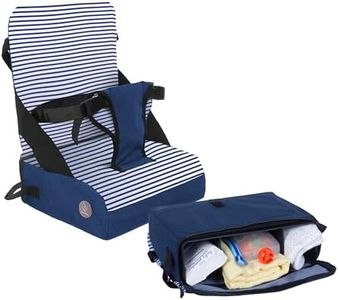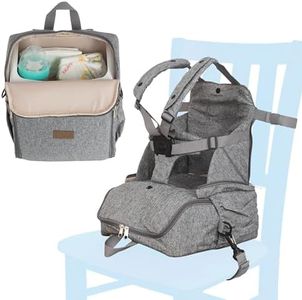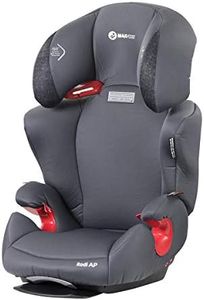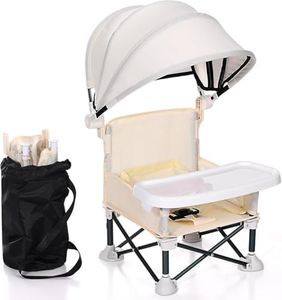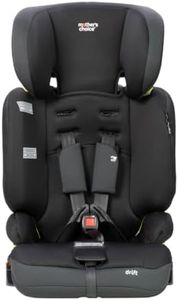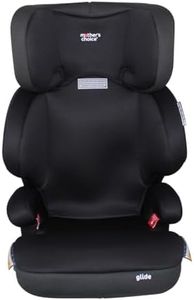We Use CookiesWe use cookies to enhance the security, performance,
functionality and for analytical and promotional activities. By continuing to browse this site you
are agreeing to our privacy policy
10 Best High Back Booster Seats
From leading brands and best sellers available on the web.By clicking on a link to a third party's website, log data is shared with that third party.
Buying Guide for the Best High Back Booster Seats
Choosing the right high-back booster seat is crucial for your child’s safety and comfort as they transition from car seats to regular seat belts. High-back boosters offer valuable support for a growing child, helping to position the seatbelt correctly while providing crucial side and head protection. When selecting a high-back booster, focus on features that fit your car, suit your child’s height and weight, and offer ease of use for daily routines. Always check that the seat is easy to install and compatible with your vehicle’s seating arrangements.Weight and Height LimitsWeight and height limits specify the minimum and maximum size for children using the seat. They are essential because using a booster outside these limits can be unsafe. High-back boosters usually start for children who have outgrown forward-facing seats, often around 30 to 40 pounds, and go up to around 100 to 120 pounds. The height limit, measured to when your child’s ears reach the top of the seat or when they outgrow the highest belt guide, is also key. Choose a seat with limits that match your child’s current size and provide room to grow, making sure your child will stay protected until they fit safely in a regular seat belt.
Adjustable HeadrestAn adjustable headrest allows the booster seat to grow with your child, keeping the seatbelt in the correct position over the shoulder and providing head support. Some boosters offer multiple height positions, making it easy to adjust as your child grows. For younger, smaller children, a lower setting ensures proper fit, while older or taller children will need higher positions. The right booster is one where the headrest can be easily changed to keep your child comfortable and protected over several years.
Side-Impact ProtectionSide-impact protection refers to the energy-absorbing padding and structure along the sides of the booster. This helps protect your child’s head, neck, and torso in a crash from the side. Some seats offer basic padding, while others have reinforced wings or advanced materials for greater safety. If you often drive in busy areas or want maximum safety, look for boosters with advanced side protection. However, any side support is better than none, so ensure the booster you choose has some form of built-in side-impact protection.
Belt Positioning GuidesBelt positioning guides are features that help position the vehicle’s seatbelt correctly over your child’s shoulder and lap. Correct belt placement is vital for safety. Some boosters have color-coded guides or built-in slots to help with this. For a snug and proper fit, the belt should lay flat across the upper thighs and shoulder, not the stomach or neck. If your child often moves around or the seatbelt doesn’t naturally fit well, choose a booster with clear, easy-to-use guides.
LATCH ConnectorsLATCH (Lower Anchors and Tethers for Children) connectors allow you to anchor the booster to your car’s seat, even though the child is secured with the seatbelt. LATCH helps keep the seat in place when unoccupied, making it more stable and safer in an accident. Some boosters offer LATCH for easy installation, while others rely on just the seatbelt. If you want extra stability or frequently move the seat between cars, a booster with LATCH connectors can be helpful, but it’s not required for children once they’re using a booster with a seatbelt.
Removable Back and Convertible DesignSome high-back boosters can be converted into a backless booster for older children. This versatile design means you can continue using the seat as your child grows bigger and outgrows the back support. If you want to invest in one product that lasts longer and meets different needs, a convertible booster is a practical choice. However, if your child still needs head and neck support or falls asleep in the car, sticking with a high-back design may be safer.
Comfort FeaturesComfort features like padded seats, arm rests, cup holders, and breathable fabrics can make long rides easier for your child. If you take frequent longer trips or want your child to enjoy being in the seat, look for these extras. Some children are more sensitive to comfort, so try to match features like padding, adjustability, and accessories to your child’s preferences and daily routine.
